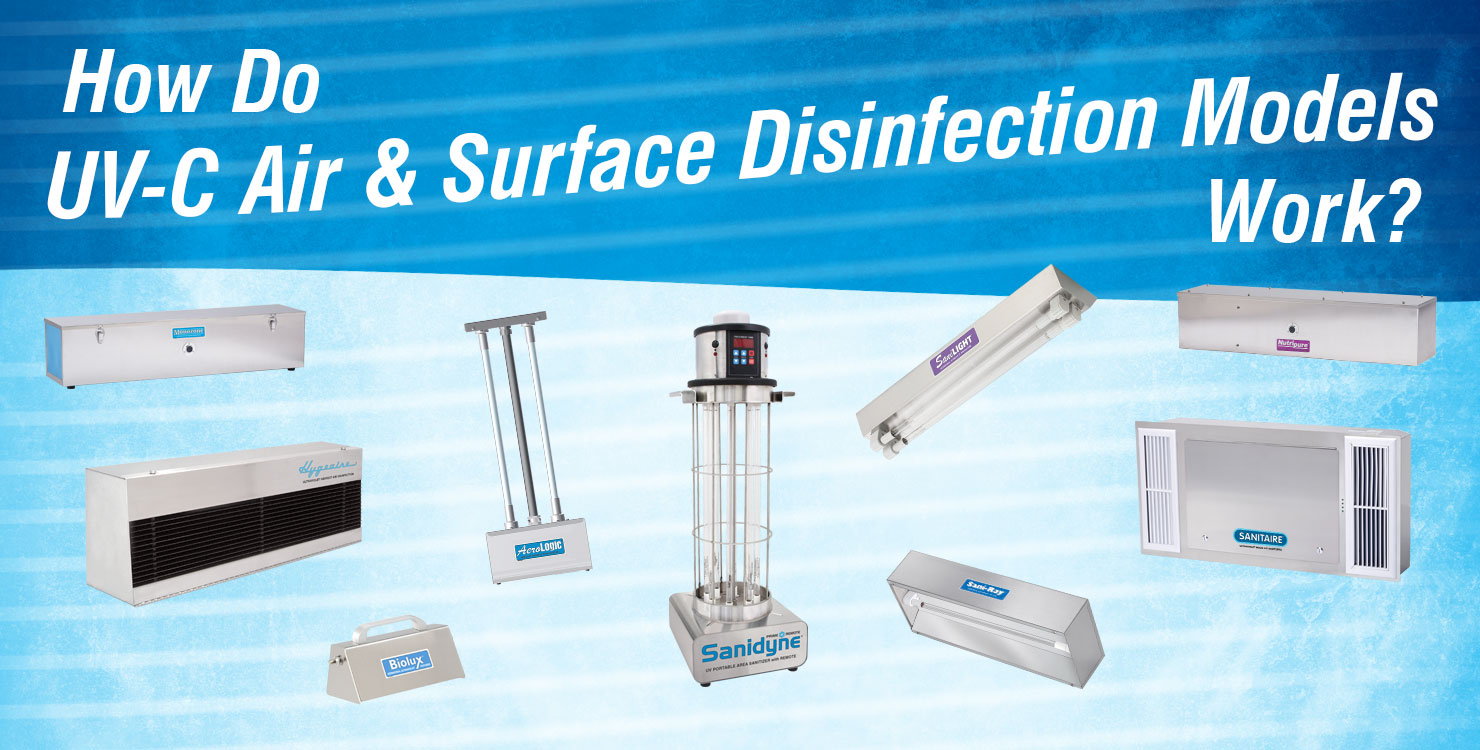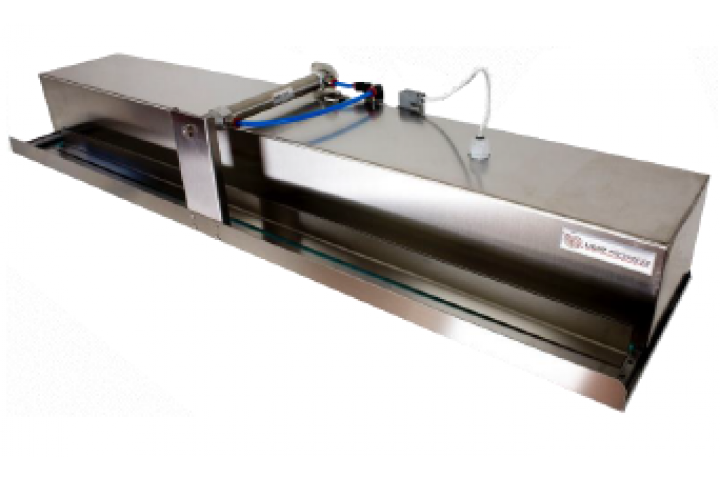UV Surface Disinfection Solutions: Enhancing Security and Health in Any Kind Of Atmosphere
UV Surface Disinfection Solutions: Enhancing Security and Health in Any Kind Of Atmosphere
Blog Article
Revealing the Benefits of UV Sanitation: Making Sure Clean and Sanitized Spaces
While traditional cleansing approaches have actually long been counted upon, developments in innovation have actually presented a cutting-edge service that makes certain tidy and sanitized rooms: UV disinfection. In addition, we will certainly delve right into the security considerations that have to be taken right into account when carrying out UV disinfection. Prepare to discover a new measurement of cleanliness and uncover the untapped possibility of UV disinfection.

The Science Behind UV Disinfection
UV disinfection is a clinically proven method that uses ultraviolet light to eliminate harmful bacteria from surfaces and water. The scientific research behind UV sanitation exists in the capacity of UV-C light to harm the DNA and RNA of microorganisms, providing them unable to duplicate and triggering their eventual death. UV-C light falls within the wavelength variety of 200 to 280 nanometers, which is extremely reliable in damaging microorganisms, infections, and other microorganisms.
When exposed to UV-C light, the genetic product of microbes absorbs the energy from the light, resulting in the formation of thymine dimers. These dimers interfere with the normal replication and transcription procedures of the microbes, preventing their capability to survive and replicate (uv surface disinfection). The DNA and RNA damages triggered by UV-C light is lethal to the microbes, making UV sanitation a trustworthy and efficient approach for killing a large range of virus
UV disinfection is specifically advantageous in atmospheres where typical chemical anti-bacterials may be unwise or ineffective. It is a non-chemical approach that does not leave any deposits or dangerous byproducts, making it risk-free for use in food processing, health care centers, water treatment plants, and various other sectors. Additionally, UV sanitation is eco-friendly, as it does not add to the development of antibiotic-resistant germs or various other dangerous pollutants.
Efficiency of UV Disinfection on Microorganisms
The effectiveness of UV sanitation in removing virus has actually been extensively researched and shown in many scientific researches. UV radiation has the capability to suspend a large range of microorganisms, consisting of microorganisms, fungis, and infections, by damaging their DNA or RNA. This avoids them from duplicating and triggering infections.
One research study published in the American Journal of Infection Control located that UV disinfection worked in minimizing the visibility of multiple drug-resistant germs in hospital spaces. An additional research study conducted by the National Institute for Occupational Safety and security and Wellness demonstrated that UV sanitation was able to eliminate 99.9% of the flu virus on surfaces.
UV sanitation has additionally revealed pledge in combating the spread of healthcare-associated infections (HAIs) According to a study released in The Lancet, the use of UV-C light along with basic cleansing methods significantly decreased the occurrence of HAIs in a medical facility setup.
Additionally, UV disinfection has actually verified to be effective versus emerging pathogens, such as the serious intense respiratory system disorder coronavirus 2 (SARS-CoV-2), which triggers COVID-19. A research study carried out by the National Arising Transmittable Diseases Laboratories demonstrated that UV-C light can suspend the virus on surfaces within seconds.
Applications of UV Sanitation in Different Settings
With its tried and tested performance in getting rid of virus, UV sanitation has found applications in a variety of setups. Among the most common areas where UV disinfection is used remains in medical care centers. UV modern technology is used to decontaminate person spaces, operating areas, and various other high-touch surfaces, lowering the danger of healthcare-associated infections. In addition, UV disinfection is likewise being implemented in food processing plants and dining establishments to guarantee the safety and security of food products and protect against the spread of foodborne ailments. UV disinfection is additionally advantageous in water therapy plants, where it is made use of to eliminate damaging microbes and provide secure alcohol consumption water.
Another important application of UV sanitation is in the air filtration industry. UV air purifiers are utilized in domestic, industrial, and industrial settings to remove air-borne bacteria, infections, and mold and mildew spores. This innovation is particularly valuable in atmospheres where people are much more at risk to respiratory system infections, such as medical facilities, schools, and office complex.
Moreover, UV disinfection is progressively being used in public transport systems, such as buses and trains, to keep clean and sanitized spaces for guests. UV light is utilized to sanitize surface areas and air inside the automobiles, lowering the threat of spreading contagious illness.
Benefits of UV Sanitation Over Traditional Methods
In contrast to traditional approaches, UV disinfection supplies a series of unique benefits that make it a more suitable selection in different sectors and settings. One substantial benefit is its performance against a broad range of bacteria, consisting of microorganisms, fungi, and infections. Unlike chemical disinfectants that might have restricted efficacy versus particular pathogens, UV disinfection is a non-selective process that can kill or suspend a wide range of harmful organisms.
One more advantage of UV disinfection is its capacity to provide rapid and reliable sanitation. Typical sanitation approaches often need longer call times or numerous steps to achieve the desired level of disinfection. On the other hand, UV light can offer prompt and constant sanitation, reducing downtime and boosting efficiency in numerous applications.
UV sanitation likewise uses a environmentally pleasant and risk-free option to typical sanitation methods. uv surface disinfection. Unlike chemical representatives, UV light does not leave behind any dangerous residues or byproducts, making it appropriate Clicking Here for usage in delicate settings such as food processing centers, health care setups, and water therapy plants
Additionally, UV disinfection is a cost-efficient option over time. While the upfront financial investment for UV disinfection systems might be higher than conventional approaches, the operational costs are commonly lower. UV lights have a long life-span and require marginal maintenance, resulting in reduced labor and substitute prices.
Safety And Security Considerations for UV Disinfection
Taking into consideration the possible dangers connected with UV sanitation, it is necessary to address the safety factors to consider associated with executing this technology. UV disinfection utilizes ultraviolet light to eliminate or suspend microbes, making it an efficient approach for disinfecting various surfaces and objects. It is essential to recognize that UV radiation can additionally position dangers to human wellness if correct safety measures are not adhered to.
Most importantly, straight exposure to UV radiation can trigger injury to the skin and eyes. Extended direct exposure can result in sunburn, skin damage, and even an enhanced danger of developing skin cancer. As a result, it is critical to guarantee that UV disinfection systems are appropriately confined and outfitted with security attributes such as automated shut-off systems or activity sensing units to avoid unintentional exposure.

Additionally, appropriate training and education and learning are essential for those accountable for running UV sanitation systems. They need to understand the possible dangers, understand the security protocols, and know exactly how to handle and maintain the devices correctly.
Final Thought
To conclude, UV disinfection uses numerous advantages in making sure clean and sterilized areas. Its effectiveness in removing virus has been confirmed with scientific research. UV disinfection can be applied in numerous settings, consisting of health care facilities, food handling plants, and water therapy systems. look at here Contrasted to standard methods, UV disinfection has advantages such as faster disinfection times, marginal chemical usage, and no damaging byproducts. Safety considerations have to be considered to stop prospective threats connected with UV exposure.
UV disinfection is a scientifically tried and tested approach that utilizes ultraviolet light to more helpful hints remove harmful bacteria from surfaces and water. The DNA and RNA damage created by UV-C light is lethal to the microbes, making UV sanitation a reliable and dependable technique for eliminating a wide array of virus.
One more advantage of UV sanitation is its ability to offer rapid and effective sanitation. UV disinfection makes use of ultraviolet light to kill or inactivate bacteria, making it an efficient approach for sterilizing various surface areas and objects. Contrasted to typical approaches, UV sanitation has benefits such as faster disinfection times, very little chemical usage, and no dangerous byproducts.
Report this page